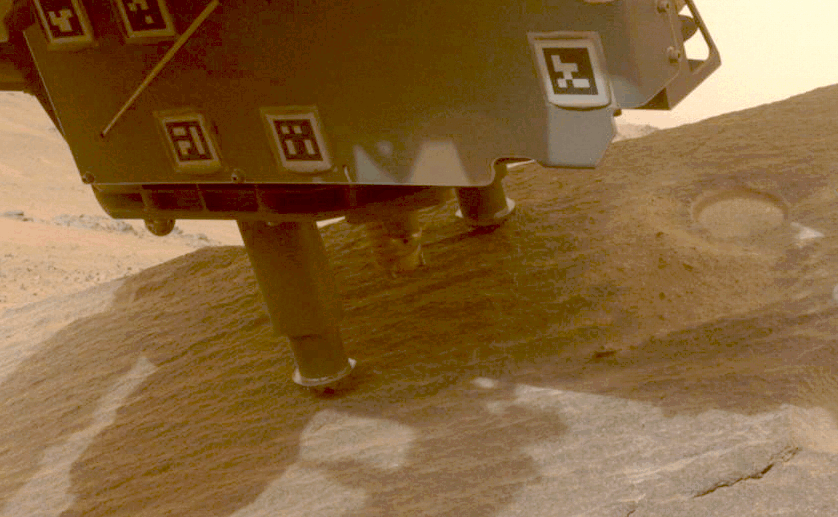NASA has taken a closer look at a strange rock on Mars known as “Bunsen Peak”, named after the peak in Yellowstone National Park in Wyoming.
When the Perseverance rover first photographed the rock, it immediately drew the attention of NASA scientists.
“This rock was intriguing because it stands tall among the surrounding terrain and has some interesting surface texture on its left face,” NASA explained in a statement, shortly after its discovery.
“Another feature of the rock that stood out in the image was the near vertical face directly in front of the rover. A vertical face piques the interest of the science team for a couple of reasons: first, a vertical face of a rock could give a cross-sectional view of any chemical or physical layering that might be occurring in the rock. Second, a vertical face is usually less dust-covered, which is good news for our scientific instruments!”
On March 11, Perseverance used its drilling tool to collect a sample of the 1.7 meters by 1 meter (5.6 feet wide and 3.3 feet high) rock for analysis, after finding that it is 75 percent carbonate grains held together with “almost pure” silica, through use of spectrometers.

NASA’s Perseverance Mars rover collecting a sample from “Bunsen Peak”.
So why is NASA so intrigued by this rock in particular? A large part of Perseverance’s mission is to collect samples of rocks and soil that could contain telltale signs of ancient microbial life, and rocks like this one may be the best chance at finding it.
“To put it simply, this is the kind of rock we had hoped to find when we decided to investigate Jezero Crater,” Ken Farley, project scientist for Perseverance at Caltech in Pasadena, California, said in a statement. “Nearly all the minerals in the rock we just sampled were made in water; on Earth, water-deposited minerals are often good at trapping and preserving ancient organic material and biosignatures. The rock can even tell us about Mars climate conditions that were present when it was formed.”
Though further analysis needs to be done, the team believes the rock could be part of an ancient lake.
“We’re still exploring the margin and gathering data, but results so far may support our hypothesis that the rocks here formed along the shores of an ancient lake,” added Briony Horgan, a Perseverance scientist from Purdue University, in West Lafayette, Indiana. “The science team is also considering other ideas for the origin of the Margin Unit, as there are other ways to form carbonate and silica. But no matter how this rock formed, it is really exciting to get a sample.”
Perseverance will continue to collect samples along the Jezero Crater, and is headed for an area known as “Bright Angel”, thought to contain far older rocks. All going to plan, the samples will eventually be returned to Earth by a sample collection mission heading to the planet in 2028.
[H/T: Forbes]
Source Link: Sample 24: Strange Rock On Mars Investigated By NASA